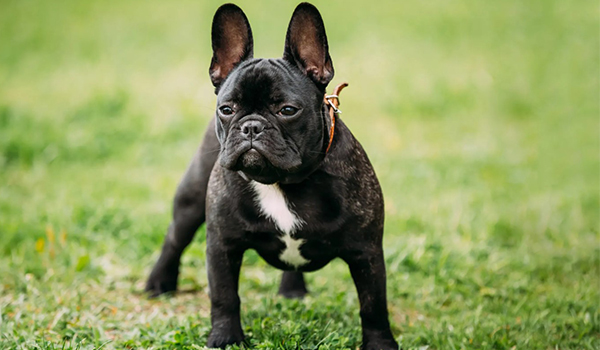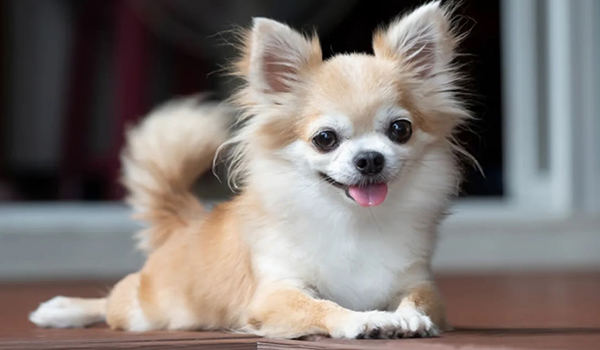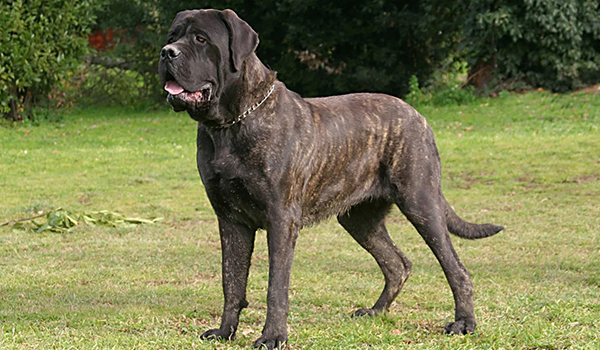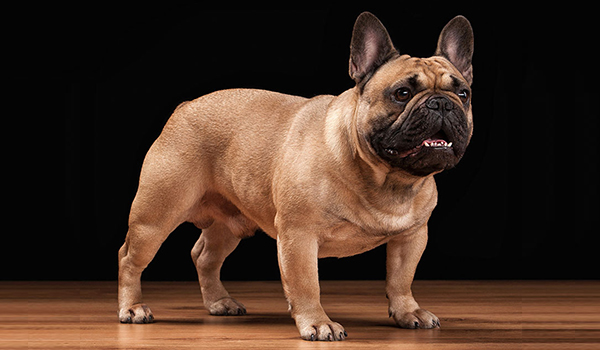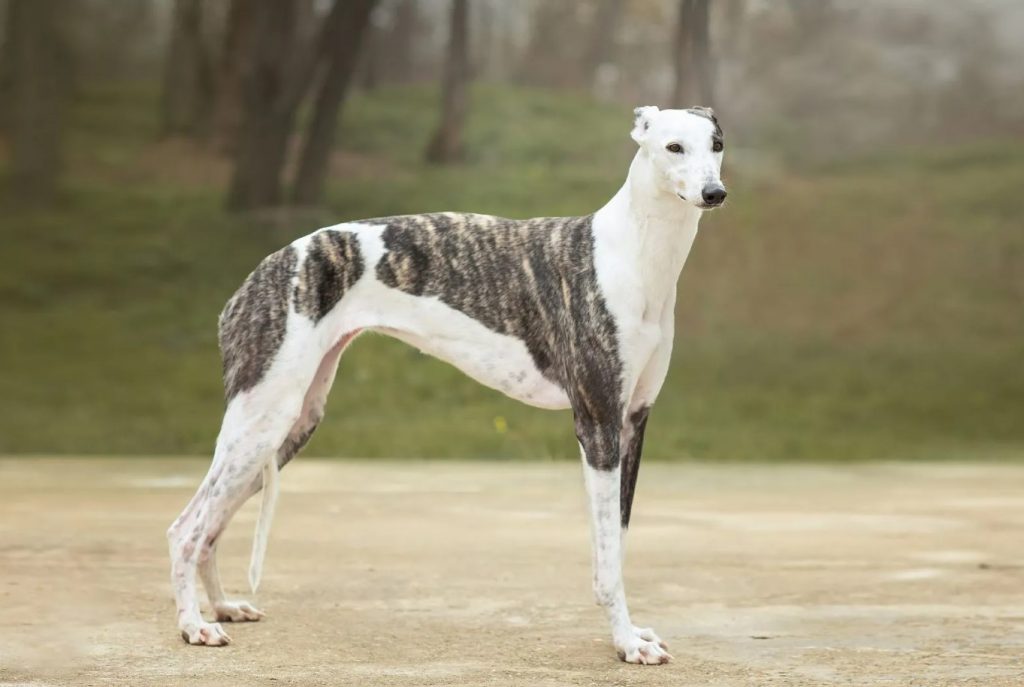
The Greyhound is a breed of ancient elegance, breathtaking speed, and surprising gentleness. Known as the world’s fastest couch potato, they are a study in contrasts: capable of explosive acceleration up to 45 miles per hour, yet famously calm, quiet, and low-energy in the home. Whether a retired racer or a show-bred dog, the Greyhound offers a unique combination of athletic history and serene companionship.
This comprehensive guide will explore everything a future owner needs to know about the Greyhound to help you decide if this noble and gentle soul is the right fit for your lifestyle.
Breed Overview
- Group: Hound
- Height: 27 – 30 inches (at the shoulder)
- Weight: 60 – 70 pounds (females are typically smaller)
- Life Span: 10 – 14 years
- Coat: Short, smooth, and firm to the touch. It requires minimal grooming and comes in a wide variety of colors, including black, white, red, blue, fawn, brindle, and any combination of these.
A Brief History: An Ancient and Noble Lineage
The Greyhound is one of the most ancient dog breeds, with depictions of similar dogs appearing in Egyptian tombs dating back to 2900 B.C. They were highly valued by nobility throughout history for their hunting prowess, primarily in coursing game like deer and hare. Their name may derive from the Old English “grighund,” where “hund” meant dog, but the meaning of “grig” is uncertain.
Their evolution led to two main types: show-bred Greyhounds, bred for conformation, and racing Greyhounds, bred for performance. With the decline of the commercial racing industry in many areas, thousands of retired racing Greyhounds (often called “Greys”) have become beloved pets, showcasing their wonderful temperament to a wider audience.
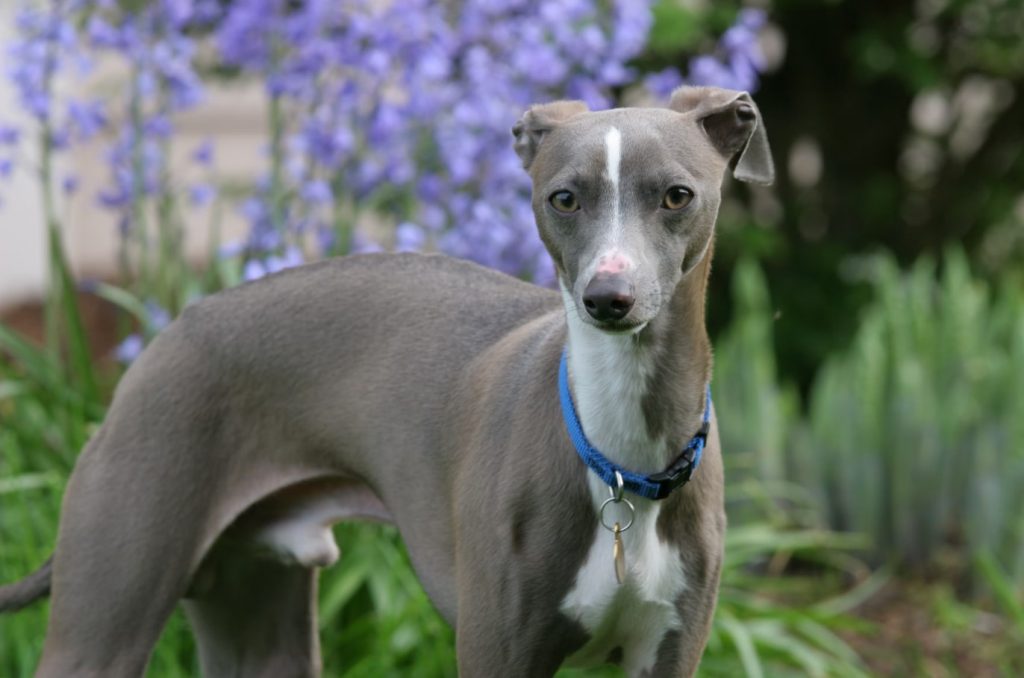
The Greyhound Temperament: The 45-mph Couch Potato
The Greyhound’s personality is the perfect blend of noble reserve and gentle affection. They are known for their quiet and easygoing nature.
- Calm & Quiet: Inside the home, Greyhounds are remarkably calm, quiet, and undemanding. They are often described as “40% cat” due to their love of lounging on soft surfaces and their generally reserved demeanor.
- Gentle & Sensitive: They have a gentle, sensitive, and sometimes timid nature. They form deep bonds with their families and are often “velcro dogs” who like to be near their people, but they are not typically overly demanding of attention.
- Good-Natured & Peaceful: They are generally good with other dogs and are not known for being territorial or aggressive. Their peaceful nature makes them excellent companions.
- Reserved with Strangers: They can be aloof or shy with strangers but are not hostile. They warm up gradually and appreciate a calm approach.
- Sighthound Prey Drive: Their instinct to chase anything that moves quickly (squirrels, rabbits, small dogs, cats) is extremely strong and hardwired. This is their most powerful instinct.
Caring for Your Greyhound
Exercise: Sprinters, Not Marathon Runners
Despite their reputation as athletes, retired Greyhounds have surprisingly moderate exercise needs. They are built for short, intense bursts of speed, not endurance.
- Daily Requirements: 20-30 minutes of daily activity is usually sufficient. This typically consists of a few leisurely walks and…
- The “Sighthound Sprint”: The most important exercise is a daily, safe opportunity to run full-out in a securely fenced area for a few minutes. This satisfies their innate need for speed.
- Mental Stimulation: They are intelligent but content with a calm home life. They enjoy short training sessions and simply being with their family.
Grooming: Extremely Low-Maintenance
- Brushing: A quick weekly wipe-down with a grooming mitt or a soft brush is all that’s needed to remove loose hair. They are light shedders.
- Bathing: Bathe only as needed. Their coat has very little “doggy” odor.
- Dental Care: Regular teeth brushing is important, as retired racers often have dental issues from their track diet.
- Nail Care: Regular nail trimming is crucial, as their long toes and fast-growing nails can affect their unique gait.
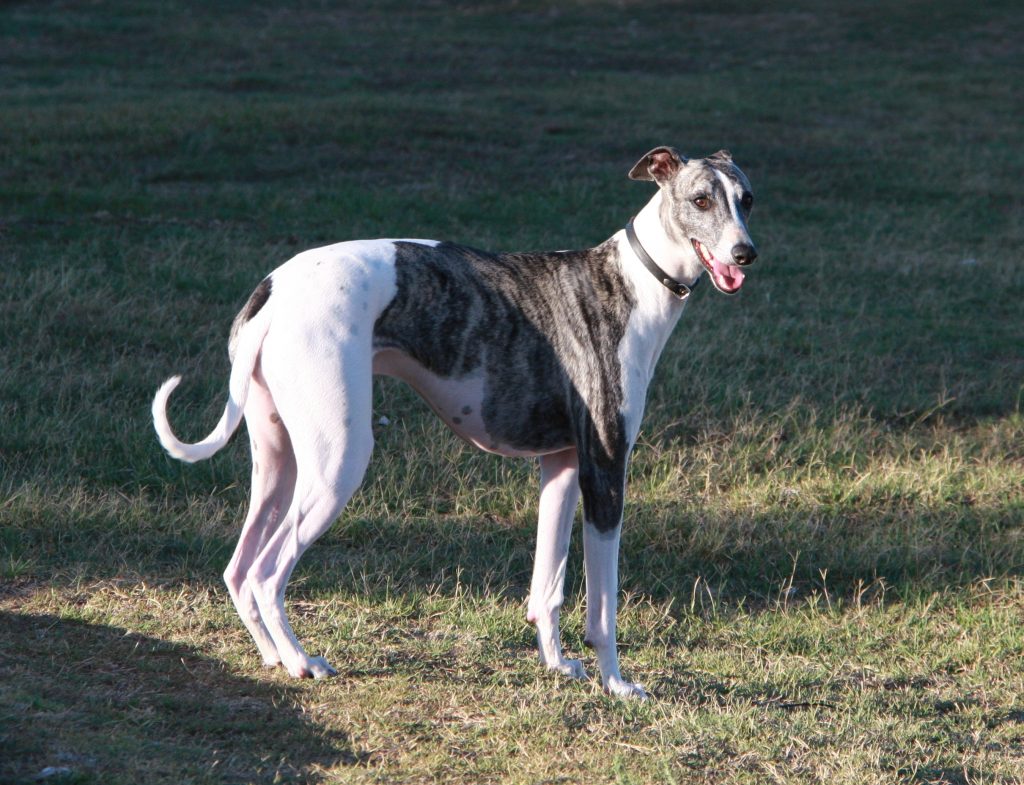
Training: Gentle and Patient Guidance
Training a Greyhound requires an understanding of their unique history and sensitive nature.
- For Retired Racers: They come with a unique set of skills (running in a circle) but need to learn basic house manners like climbing stairs, walking on slick floors, and understanding windows and glass doors. Patience is key.
- Use Positive Reinforcement: They are sensitive souls who respond beautifully to reward-based training with high-value treats, praise, and patience. Harsh methods are ineffective and damaging.
- Recall is Not Reliable: Due to their intense prey drive, a Greyhound should never be trusted off-leash in an unsecured area. Their instinct to chase will override any training when triggered.
- Socialization: Gentle, positive exposure to new people, places, and situations helps build a confident and well-adjusted dog.
Health: What to Be Aware Of
Greyhounds are generally very healthy, but they have some unique physiological traits.
- Anesthesia Sensitivity: Sighthounds have a very low body fat percentage and a unique metabolism. They require special protocols for anesthesia and certain medications. Always inform your vet that you have a Greyhound.
- Bloat (Gastric Dilatation-Volvulus): Like other deep-chested breeds, they are at risk for this life-threatening condition. Feed smaller meals and avoid vigorous exercise around mealtimes.
- Dental Issues: Common in retired racers due to their past diet. Regular dental check-ups and cleanings are important.
- Osteosarcoma: Unfortunately, this aggressive bone cancer is more common in Greyhounds than in many other breeds.
- Thin Skin: They are prone to cuts and tears due to their thin skin and lack of body fat. They get cold easily and often need coats or sweaters in cool weather.
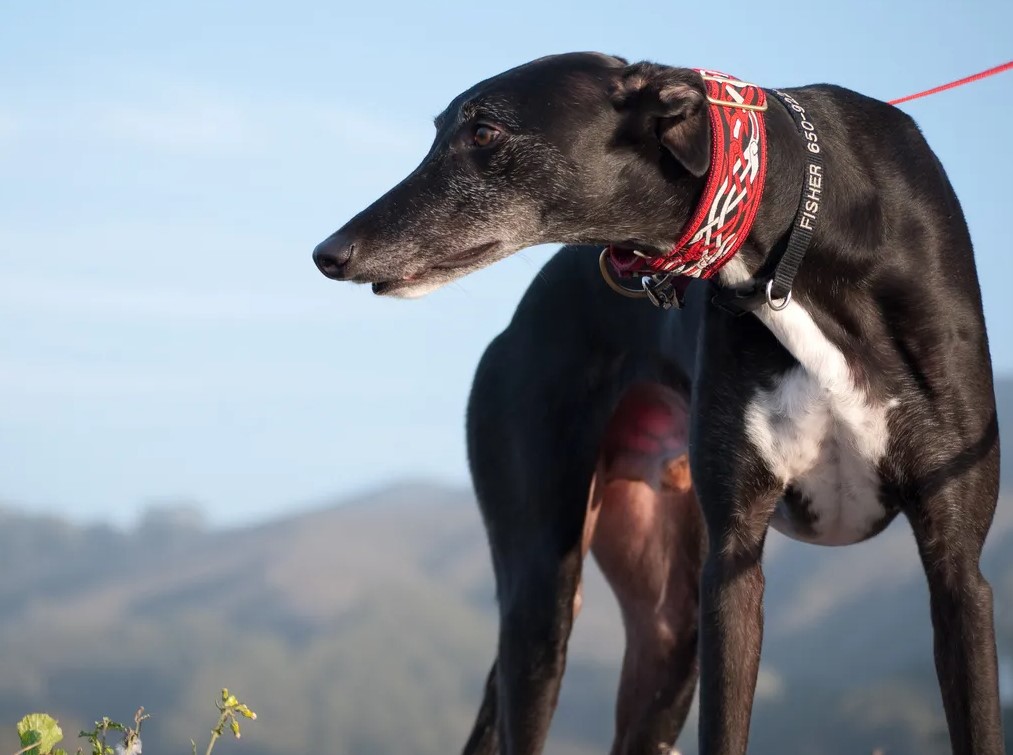
Is a Greyhound Right For You?
A Greyhound might be your perfect match if you:
- Want a calm, quiet, and low-energy indoor companion.
- Appreciate a gentle, undemanding, and affectionate dog.
- Have a securely fenced yard or access to a safe, enclosed area for running.
- Are a patient, gentle owner who prefers positive reinforcement.
- Are looking for a low-maintenance dog in terms of grooming and barking.
You should absolutely reconsider if you:
- Have cats or other small pets (unless the Greyhound is specifically tested and known to be small-animal safe).
- Want a dog with reliable off-leash capabilities in open areas.
- Are looking for a highly obedient, eager-to-please breed for advanced obedience.
- Live in a very cold climate without providing warm clothing for your dog.
Finding Your Greyhound
- Adoption (Retired Racers): This is the most common path. Greyhound adoption groups are excellent resources. They foster the dogs, assess their temperament (including cat tolerance), and provide immense support for new owners.
- Reputable Breeders: If seeking a show-bred puppy, choose a breeder who prioritizes health and temperament and is knowledgeable about the breed’s unique needs.
Understanding the Cost: The adoption fee for a retired racer is typically $200-$500, which often includes vaccinations, spay/neuter, and dental care. The ongoing costs are similar to other large breeds, with the addition of items like coats for cold weather.
Bringing a Greyhound into your life means welcoming a piece of living history—a gentle, graceful, and loving companion. In return for a soft bed and a safe place to run, you will gain a loyal and serene friend whose quiet dignity and sudden bursts of joy will enrich your life immensely.

